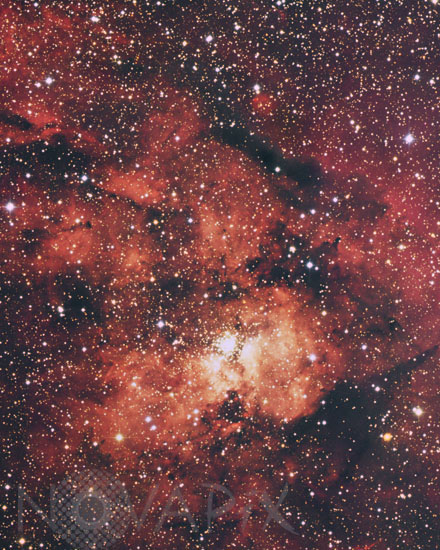Photo Agency - Astronomy - Space - Nature

Star formation region NGC 3603 in Carina
author: Anglo-Australian Observatory/David Malin Images/Novapix
reference: a-neb36-03001
Image Size 300 DPI: 40 * 51 cm
Although stars are well known to form in clusters, most of the stars in the young groups we know of in our own galaxy are well separated in space. In NGC 3603 the stars are remarkably close together. Moreover, many of the stars in this compact constellation are Wolf-Rayet stars, extremely hot, massive objects, rarely found in such profusion in clusters. Exactly why some clusters form massive stars and others do not is a hot topic in astronomy, so this cluster and its environment has been extensively studied. This curious collection of young objects is, as far as we know, unique in our galaxy, though the enigmatic object at the centre of the Tarantula Nebula in the Large Magellanic Cloud is now known to be a similar compact cluster. The stars and their associated nebula are seen through considerable dust along the line of sight, and are dimmed and reddened by it.
Contact : Stéphane Aubin +33-(0)9-51-26-53-76
© Novapix - All rights reserved


